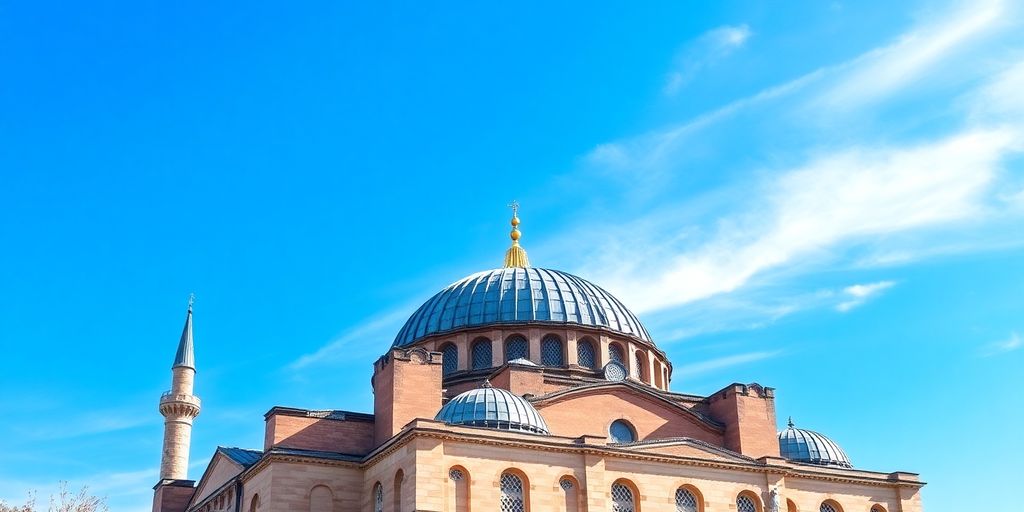Turkey has officially commenced a groundbreaking restoration project on the dome of Hagia Sophia, one of the world’s most significant historical structures. This initiative aims to reinforce the dome against seismic threats while preserving its original architectural beauty, marking the first comprehensive restoration of its kind in the building’s nearly 1,500-year history.
Key Takeaways
- The restoration project began on April 14, 2025, focusing on the main dome and surrounding semi-domes.
- The work will enhance the structure’s earthquake resilience without altering its historical features.
- A steel platform is being constructed to facilitate the restoration while allowing worship to continue.
- The project is part of a larger 50-year plan initiated in 2023 to address the building’s long-term preservation needs.
Historical Significance of Hagia Sophia
Hagia Sophia, originally built as a cathedral in 537 AD under Byzantine Emperor Justinian I, has served various roles throughout its history. It was the largest cathedral in the world for nearly 1,000 years before being converted into a mosque following the Ottoman conquest in 1453. In 1935, it was transformed into a museum, only to be reconverted into a mosque in 2020.
Restoration Details
The restoration project is set to address several critical aspects:
- Reinforcement of the Dome: The main dome, measuring 31 meters in diameter and 56 meters in height, will be reinforced to withstand potential earthquakes, particularly in light of recent seismic activity in Turkey.
- Lead Cover Replacement: The existing lead covering will be removed to assess and repair structural issues in the masonry beneath.
- Seismic Safety Enhancements: Advanced earthquake simulations have identified weak points in the structure, which will be prioritized during the restoration.
- Public Access: The restoration will be conducted while keeping Hagia Sophia open to visitors and worshippers, ensuring that the site remains a vibrant center of cultural and religious activity.
Expert Insights
Experts involved in the project emphasize the importance of using modern materials and techniques to ensure the longevity of Hagia Sophia. Dr. Mehmet Selim Okten, a construction engineer overseeing the renovations, noted that this phase represents the most significant intervention in over 150 years. He highlighted the need for careful planning and execution, as unexpected challenges may arise during the restoration process.
Community Response
Visitors and locals have expressed support for the restoration efforts, recognizing the importance of preserving such a culturally and historically significant monument. Many believe that strengthening Hagia Sophia will not only protect its architectural integrity but also enhance its role as a symbol of cultural heritage in Turkey and beyond.
Conclusion
The restoration of Hagia Sophia’s dome marks a pivotal moment in the ongoing efforts to preserve this iconic structure. As Turkey invests in the future of Hagia Sophia, the project stands as a testament to the nation’s commitment to safeguarding its rich history while adapting to modern challenges. The world will be watching as this historic landmark undergoes its most significant restoration yet, ensuring that it continues to inspire generations to come.
Sources
- Türkiye starts first-ever restoration on main dome of historical Hagia Sophia-Xinhua, Xinhua.
- Historic domes of Turkey’s Hagia Sophia renovated to protect the monument from earthquakes, Los Angeles Times.
- Turkey to begin restoration work on dome of Hagia Sophia, The Jerusalem Post.
- Turkey to begin restoration work on dome of Hagia Sophia, Reuters.
- Turkey Launches Groundbreaking Restoration Project For 1,486-year-old Hagia Sophia Dome, Addressing Weak
Points Through Earthquake Simulations, Greek City Times.






